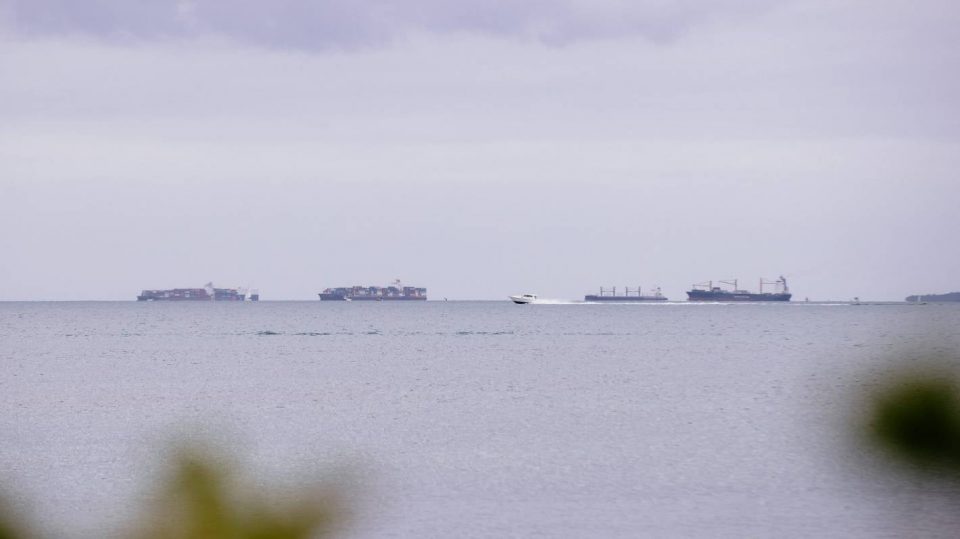Abigail Dougherty/Stuff
Seven container ships waiting out in the Waitematā harbour by Rangitoto island.
Worldwide disruption to the supply chain caused by Covid-19 has resulted in a backlog of freight ships anchored on the Waitematā Harbour as they wait to dock at the Ports of Auckland.
Eleven freight ships could be seen in a queue near Rangitoto Island at one point on Saturday morning, much more traffic than North Shore residents are used to seeing out on the water.
Ports of Auckland spokesman Matt Ball said there were only 11 anchorages at the site, and that it was the only time he could ever recall each being occupied.
Included in Saturday’s fleet were six container ships, two general cargo ships, one car carrier and a ship full of bananas, aptly named Kōwhai (yellow).
READ MORE:
* Import waiting time reduces, but port’s search for skilled staff continues
* Coronavirus: Ships could have shore-leave tightened after new Covid-19 cases
* Coronavirus: Ports of Auckland reassures public over docked cruise ships
RNZ
The global supply chain which sees books end up on the shelves has developed a few kinks. Space on shipping freight and in crates is in short supply, and then when they are in transit, they’re often being delayed. It’s all leading to a tense time for the sector, from publishers, to distributors, to sellers.
Covid-19 had resulted in “significantly disrupted supply chains around the world,” Ball said.
Earlier in the year container trade rates had been “quite low”, as had car carriers which were down by about 75 per cent.
But in the middle of the year it “came back in a hurry”.
“We haven’t been able to keep up with the labour requirements,” Ball said.
Abigail Dougherty/Stuff
Container ships waiting out in the Waitematā harbour by Rangitoto island.
In March during the Auckland ports’ quietest time of year, it was due to start the process of becoming New Zealand’s first container terminal to use automated straddle carriers to load and unload trucks and operate the container yard.
However, the Covid-19 alert level four lockdown prevented the overseas experts required from entering the country, meaning the ports are now facing implementation at the busiest time of the year, Ball said.
The Auckland Council-owned company was in the process of trying to hire 50 new dock workers. While it was “having some success”, it was a slow process.
It was hoping to have a new crane crew on board by Christmas.
Ironically, 50 stevedores were let go from the company when the ports undertook partial automation of its container yard in 2016.


